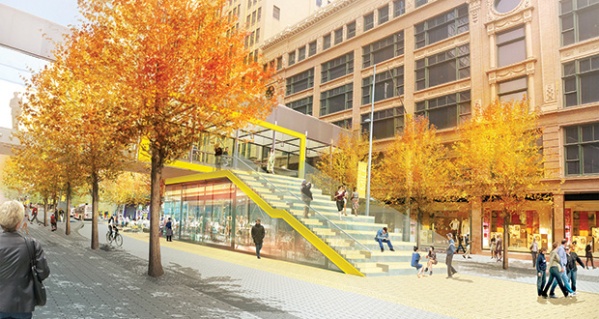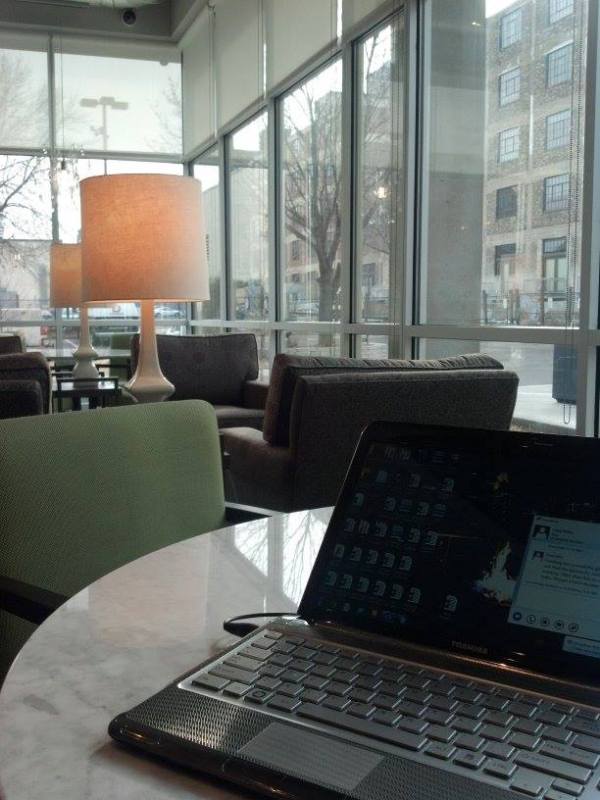
Renting “high end” or “luxury” doesn’t make one immune to living in buildings that aren’t well managed or may be hazardous to your renter’s credentials.
I have a confession to make. Despite the polished veneer we put on our blog entries in late 2013-14 regarding our first rental experience in Minneapolis, what actually happened was more closer to a nightmare than most anywhere I’ve rented in my life. No doubt, that is why my blog entries for UD became markedly fewer and far between. A period of recovery was necessary after what occurred.
This all came as an extreme surprise after the 8 years of rental bliss we experienced in Lowertown, with building staff who attended our wedding reception and slipped cards under our door for significant life events. But our first 18 months living near downtown Minneapolis taught us that:
- Renting “high end” or “luxury” doesn’t make one immune to living in buildings that aren’t well managed and, as in our case, may be hazardous to your renter’s credentials and cause you a high level of personal stress. (In my case, the stress landed me overnight in Abbott Northwestern Hospital’s cardiac unit for observation last year.)
- A positive high profile doesn’t always indicate what’s really happening in the building. In our case, the building owner’s reputation appeared to be outstanding, and this person still receives positive coverage in local newspapers for his business and building projects.
- If it feels strange, inappropriate or out of control in any way, it probably is. Run, don’t walk, to the next building on your list. No matter how much you like the neighborhood, the layout of the apartment or the closeness of the location to your office, it’s not going to end well.
Settled in a new rental home as of last June in a building that isn’t perfect, but also no longer feels crazy and micromanaged, John and I look back at the stress we lived in for 18 months, and realize that there were signs and red flags about this place that we should have heeded. Below is a list of things we noticed about this building, and ignored. We hope that you might benefit from our hindsight if you’re looking for a new rental home.
- Few rental staff, and lots of interns. The summer of 2013 when we first viewed the rental building, it was really difficult to find anyone who really knew what was going on. This was because everyone we encountered was an “intern” and had not been properly educated in rental leasing procedure. I’m not even certain if this is legal, but it probably didn’t matter to this group if you note what was occurring in #2.
- Staff with no rental management experience. The really odd thing about our ordeal was that the staff, and general manager of this rental company in particular, were extremely proud of the fact that no one on staff had ever managed, or even worked in a rental building before. In fact, the general manager shared with a couple we became close to in the building, that she had been the building owner’s wife’s doula for each of his children. “Do you think he hired the other leasing agents because they served him coffee once?” commented my neighbor.
“The owner feels that this is a fresh approach to apartment management,” the general manager said to me a number of times over those 18 months, “we all have a new perspective about what running a rental home should be.” Yes, they were certainly correct about that. Here are just a few example of how this “fresh approach” worked.
Residents were not told in advance when things were going to happen in the building, such as, we were given no warning about moving our cars out of the garage to facilitate cleaning. When it was finally announced that the cleaning would be on Saturday, with a threat that unmoved cars would be towed, it was on a Thursday evening when some people had already left for the weekend.
During the entire period of our rental, the staff (at the owner’s instruction, we were told) ignored federal laws by telling residents that “we aren’t enforcing disability parking here, so you can go ahead and use the handicap spot whenever you want.” Even the owner did this, repeatedly and openly. The staff also used our mailboxes, which are property of the US Postal Service, as a vehicle to deliver building promotional flyers, lease notices, small packages that were delivered by FedEx and other services, to residents.
The list of things that this staff and the owner did to us, and other tenants, during our time there that bent and broke fair housing and anti-discrimination laws are almost too numerous to name. The foremost was marking ours, and the rental history records of at least 2 other tenants we knew of who were leaving the building, with a “would not rent to them again” notice, without providing us/future landlords with any reason when asked. (A big legal “no, no” according to Minnesota HUD.) Needless to say, if you are working with inexperienced rental leasing staff, I think there are far greater chances for things to be done unlawfully, even if you’re paying a premium price for that space.
- The owner’s name repeatedly into conversations about renter’s requests and needs. One of the big bonuses of leaving this building was that I NEVER AGAIN HAVE TO HEAR ABOUT WHAT THE OWNER WANTS, THINKS OR FEELS and how this is supposed to be something I need to be concerned about. The group of residents I knew in this building during that time used to have long discussions over wine about how useless it was to make any requests to staff, because they were only concerned about how the owner might feel about any decision they made. We noted this throughout the leasing discussion, and had a sinking feeling that the building was being micromanaged, but loved the architecture so much we ignored it. Bad move.
- They get important details wrong. As we were preparing to sign our lease, we noticed that they didn’t seem to be tracking on key details like the agreed upon price for our rent. We had to take the time to explain this to them and get the lease re-crafted, before signing.
- The lease is a novel-length list of reasons for not returning your deposit. This is the first lease I have ever seen that stated that if there were any “scratches or dents” found in the apartment after we left, that a cost per each scratch or dent would come out of our deposit. In fact, the list of potential damages that could diminish our deposit was long, ridiculously detailed and included a complete itemization of what each infraction of the rental infrastructure would cost us. They only way we could hope to get our deposit back would be by living somewhere else and keeping our furniture, and ourselves, out of the unit. (John used to joke that the owner should have built an autoclave, not an apartment building.)
Sadly, there was more than just these five red flags, but I have to say I’m getting kind of depressed typing this. We all want to believe that where we live will be a place that nurtures us, and, in apartment communities and condos particularly, allow us to contribute positively as members of a close-living community. Hopefully this list shows you that there are ways to spot a situations that may not be in your best rental interest and to find a happier, healthier place to call home.






